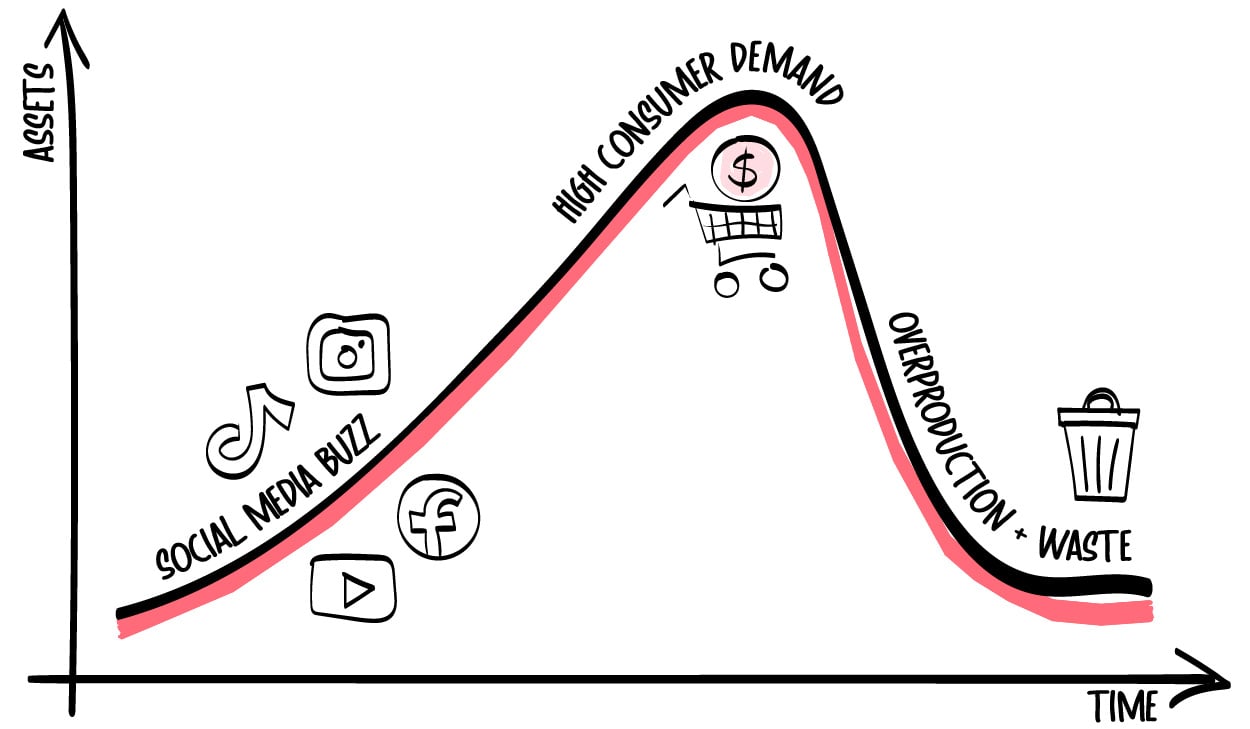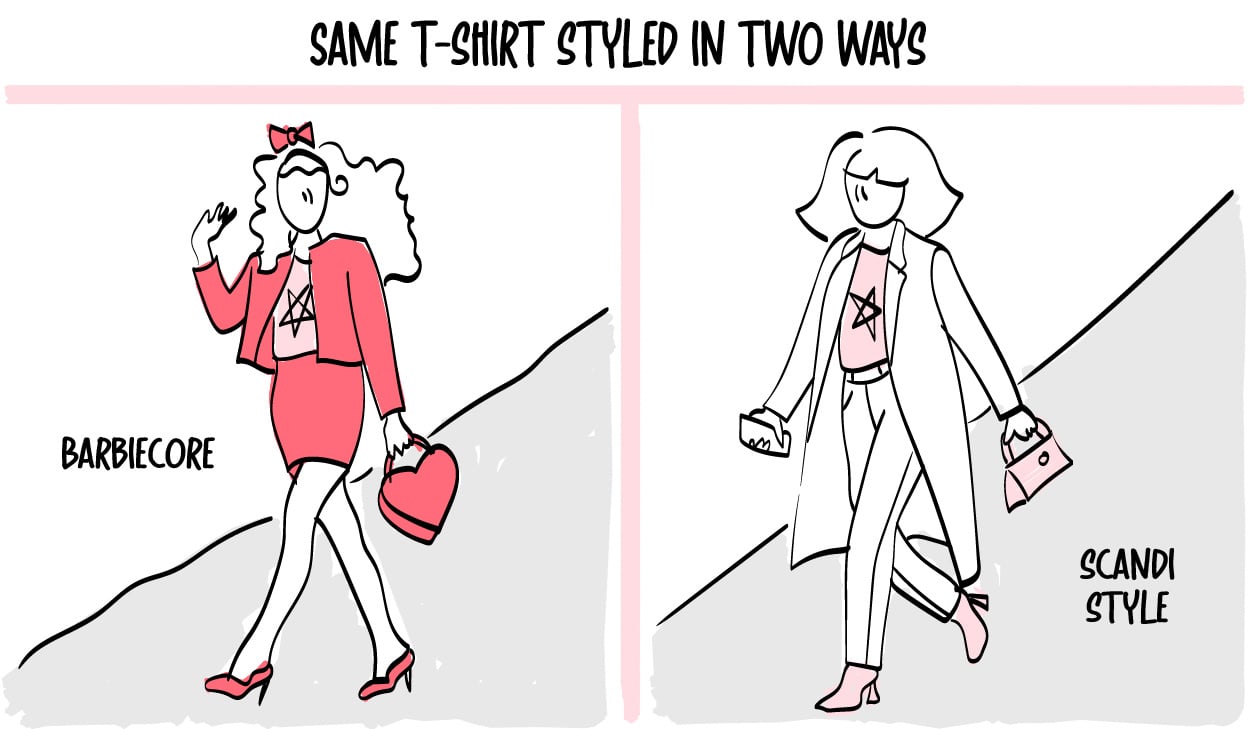
A weekly newsletter exploring the intersection of creative operations, technology, and online retail.
#013: How Retailers Can Turn Micro-Trends Into an Unfair Advantage
Last month, Peter Hartwig, our VP of Research & Innovation, presented at our bi-monthly town hall. In it, he shared what Dreem, our R&D lab, and he was working on next quarter.
One thing I took away from Peter’s presentation was how retailers can capitalize on the short-lived phenomena of micro-trends.
These are fleeting trends, like "ballet core" and "Scandi style," that seemingly emerge overnight and disappear just as quickly.
In this issue, I’ll explain micro-trends and how retailers can balance the demand for current trends with sustainable practices.
The Life Cycle of Micro-Trends: A Quick Rise, A Faster Fall
Micro-trends say a lot about the pace and pressures of modern retail.
Remember the peplum top? A staple of the early 2010s, it made a surprise comeback in 2024, fueled by influencers amplifying nostalgia and novelty. It was a déjà vu moment for millennials—something familiar from their younger years now trending again.
Micro-trends rise fast and fall even faster, leaving consequences in their wake. Unlike traditional trends that unfold over seasons, micro-trends can emerge and fade in months or weeks.

This hyper-speed challenges retail—especially for fast-fashion brands racing to produce garments quickly enough to stay relevant—and results in overproduction, mounting waste, and an even bigger environmental toll.
A recent report from the European Environment Agency paints a stark picture: up to 43% of online clothing returns are destroyed. Pair that with the discard cycle of micro-trends, and the environmental cost of “what’s in” becomes difficult to ignore.
As we navigate the balance between innovation and responsibility, micro-trends remind us of the cost of keeping up with the times.
The challenge is clear, but so is the opportunity: micro-trends don’t have to mean more waste—they can be a chance to rethink inventory.
Rethinking Micro-Trends: Repurposing What You Own
While micro-trends reshape online retail, chasing every craze often feels exhausting and unsustainable.
So, how can creative leaders keep up without burning out? Leverage what they already have in stock.
Take "Barbiecore" or "Scandi style" as examples. Here’s how micro-trends can breathe new life into unsold items through these updates:
- Keywords: Updating product keywords with trending terms ensures items appear in customer searches. For example, adding "Barbiecore" to descriptions for pink or playful items makes them more discoverable when customers search for the trend.
- PDPs (Product Detail Pages): Refreshing the tone, style, or details in the product description to match the language of a trend helps products feel relevant. Highlighting features like "minimalist aesthetic" for a "Scandi style" trend attracts trend-conscious shoppers.
- Product Images: Restyling or reshooting images to align with current trends can change customer perception. A jacket styled with sleek, neutral tones in a "Scandi-inspired" setting instantly makes it feel on-trend.
Combined with a virtual influencer campaign that can be executed within hours, these items can align perfectly with customer expectations.

This way of working changes how we think about inventory. Micro-trends become an opportunity to reimagine what’s already on hand, giving unsold items a second life.
Moreover, aligning existing stock with these emerging trends reduces waste and resonates with customers who value thoughtful, sustainable choices.
So, next time a micro-trend arises, take a moment to ask: how can we adapt quickly and responsibly?
Trends Fade, Responsibility Lasts
Keeping up with micro-trends can feel like a whirlwind, but their fleeting nature reveals something powerful:
The future of retail isn’t about chasing every trend. Instead, it’s about adapting to change.
Trends like peplum tops and “Scandi style” may come and go, but they offer a creative challenge: how can we use what we already have to stay relevant and responsible?
When brands breathe new life into existing inventory, they do more than keep shelves relevant.
They send a message about responsibility in a fast-changing industry—one ready for something better.

|
Thomas Kragelund Follow me on LinkedIn. |
Get Content Insider In Your Inbox.
The weekly newsletter packed with actionable tips, industry trends, and insider insights from Creative Force CEO Thomas Kragelund. Stay ahead in creative production and online retail—subscribe now to gain the insights you need to drive growth and stay competitive.



